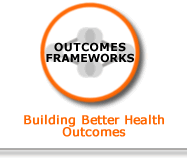 |
| |
1.3, 1.4
Evidence of an association between:those choosing to move towards work receiving timely tailored support, and
more workplaces effectively implementing supportive health, work and well-being policies, and, subsequently, practices.
|
There is evidence of an association between one or more of the longer-term outcomes and the intermediate outcomes: workers and those choosing to move towards work receive timely tailored support; and more workplaces effectively implementing supportive health, work and well-being policies and, subsequently, practices.
Rationale
There is review level evidence:
-
to support the association between individuals receiving timely, tailored support and improvements in health and wellbeing (physical and mental), and productivity outcomes, and work outcomes (e.g. return to work and decreased duration of sickness absence). Informed by reviews of effectiveness evidence, authors highlight the importance of early intervention in supporting people to return to and remain in and work and well, and provide evidence for the effectiveness of early intervention.[1]
-
to suggest that the duration of sickness absence is significantly reduced by early and sustained contact between the employer and absent workers.[1]
-
to support the implementation of supportive health, work and wellbeing policies and practices to improve worker’s health and wellbeing (physical and mental), and outcomes, and work outcomes (e.g. return to work and decreased duration of sickness absence).[1, 2]
Sources:
-
Waddell G, Burton AK, Kendall N (2008). Vocational Rehabilitation: What works, for whom, and when? Vocational Rehabilitation Task Group report. The Stationary Office: London.
-
NICE (2009). NICE public health guidance 19 Managing long-term sickness absence and incapacity for work. NICE: London.
|
|
|



